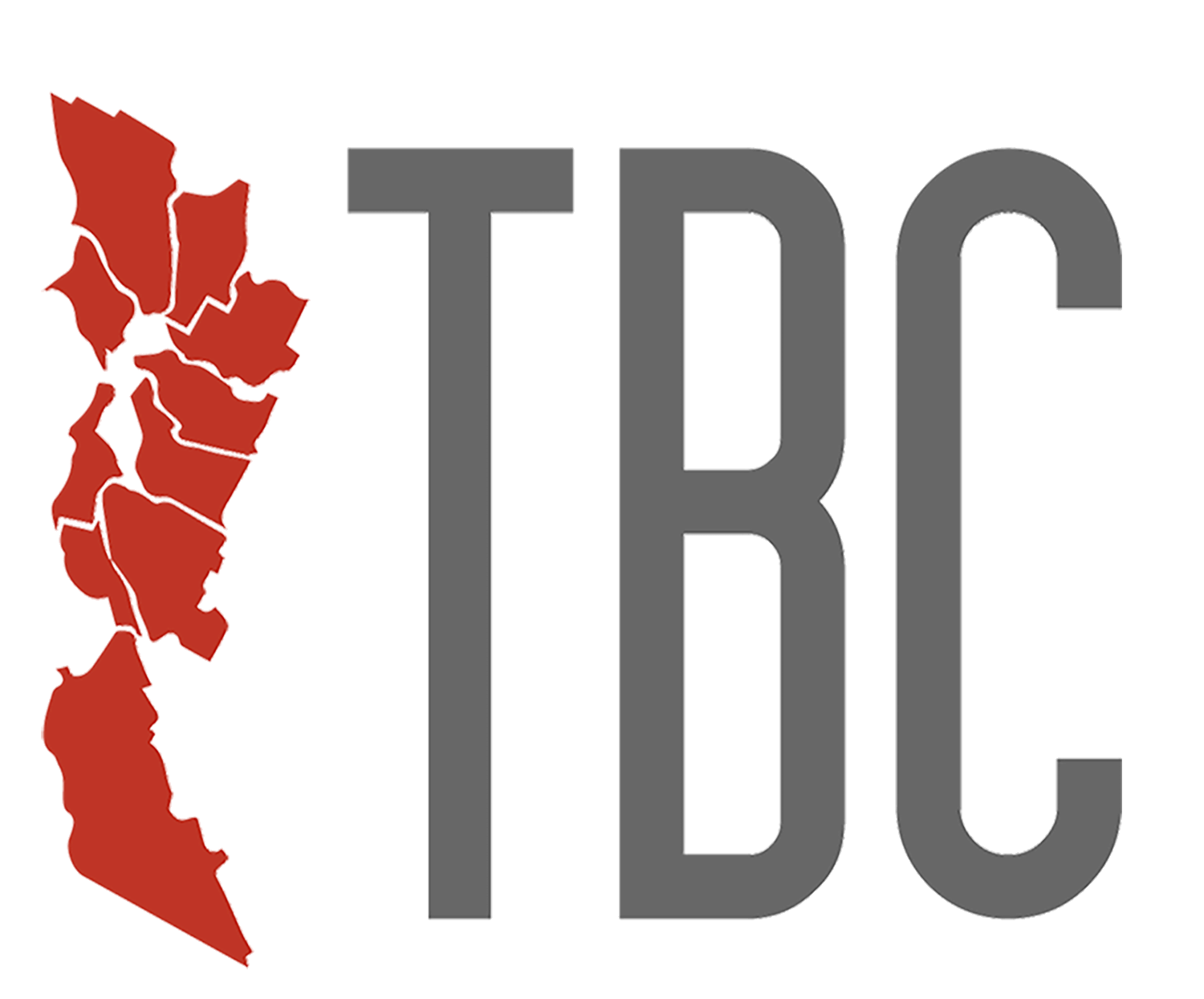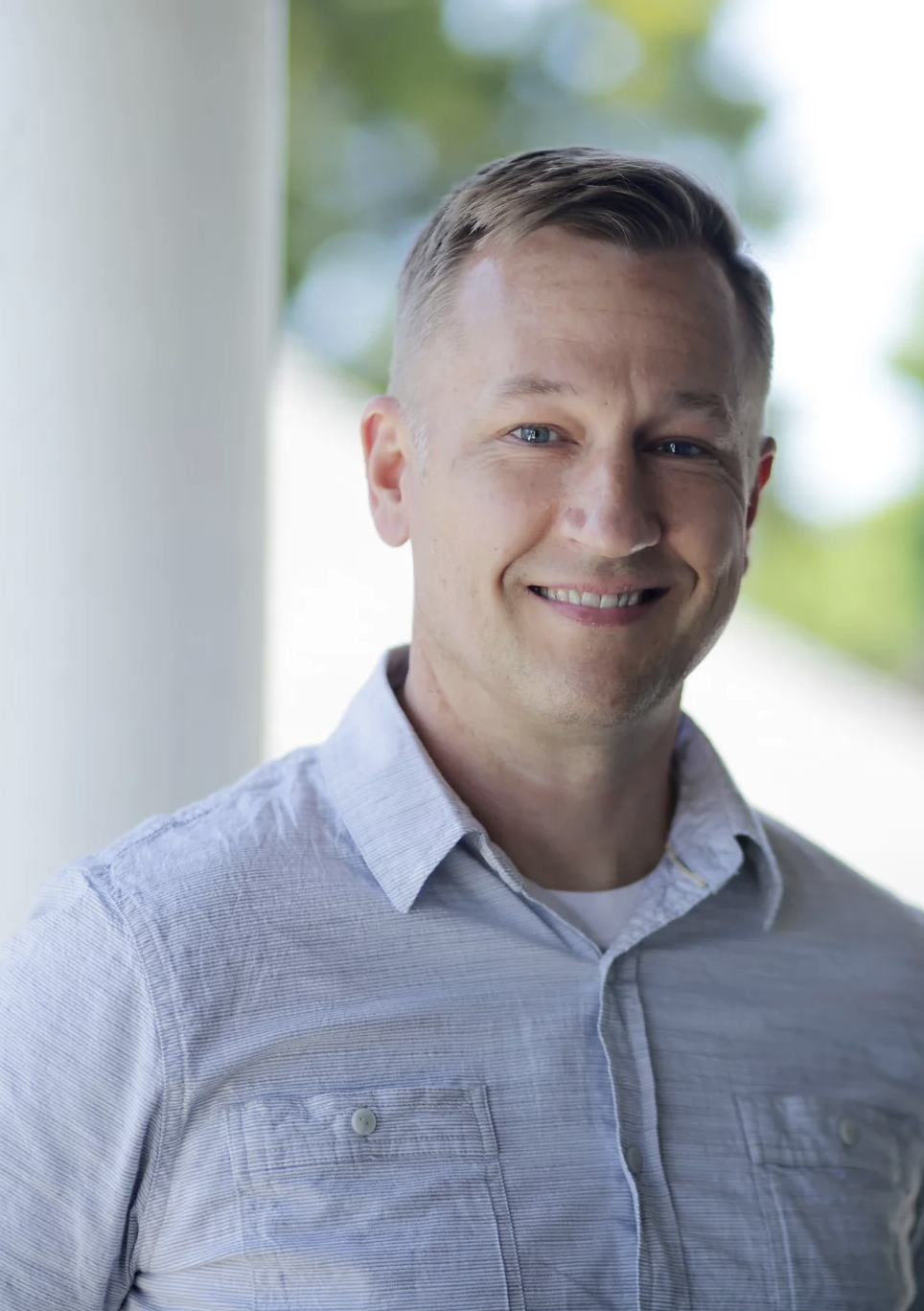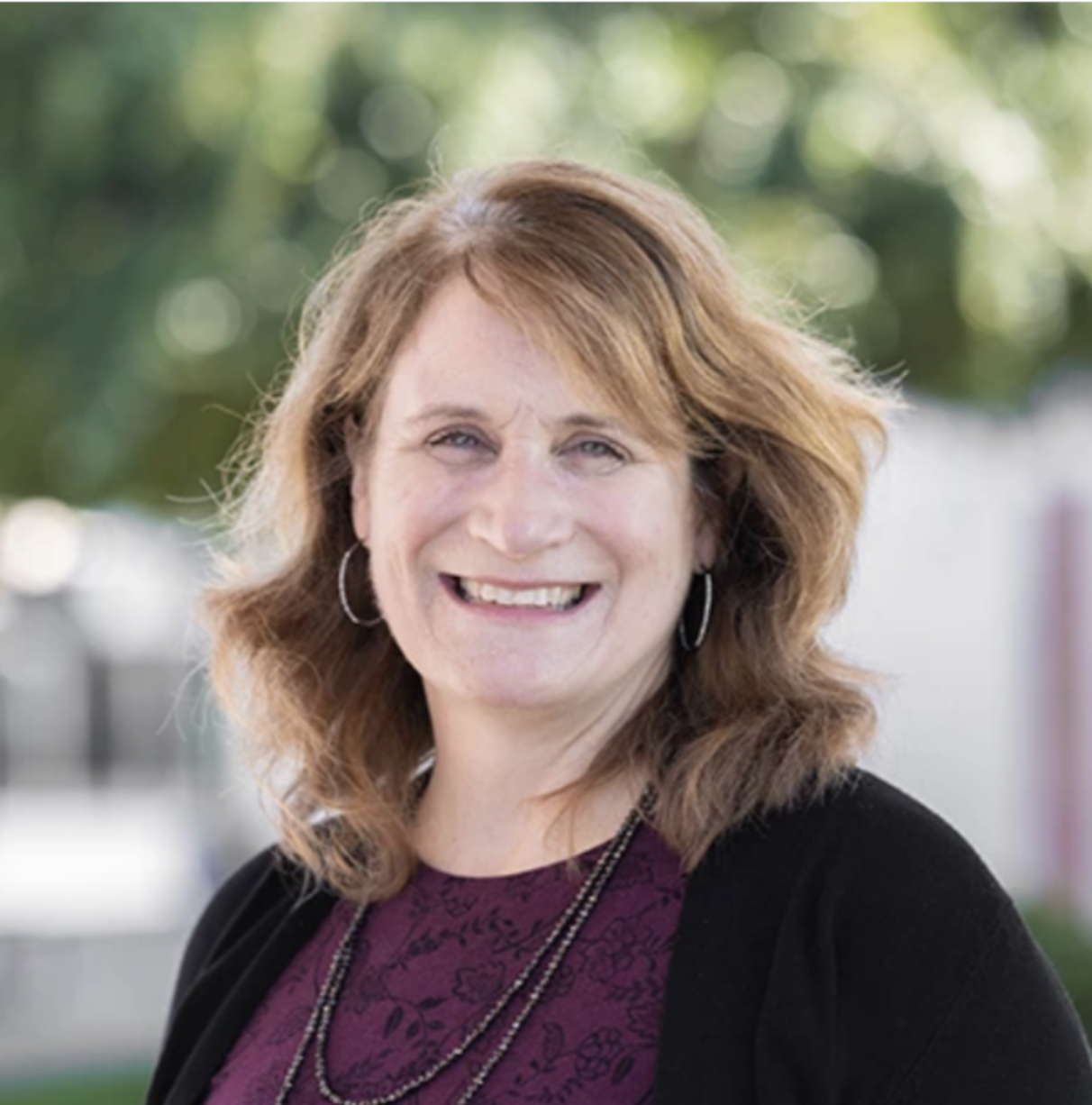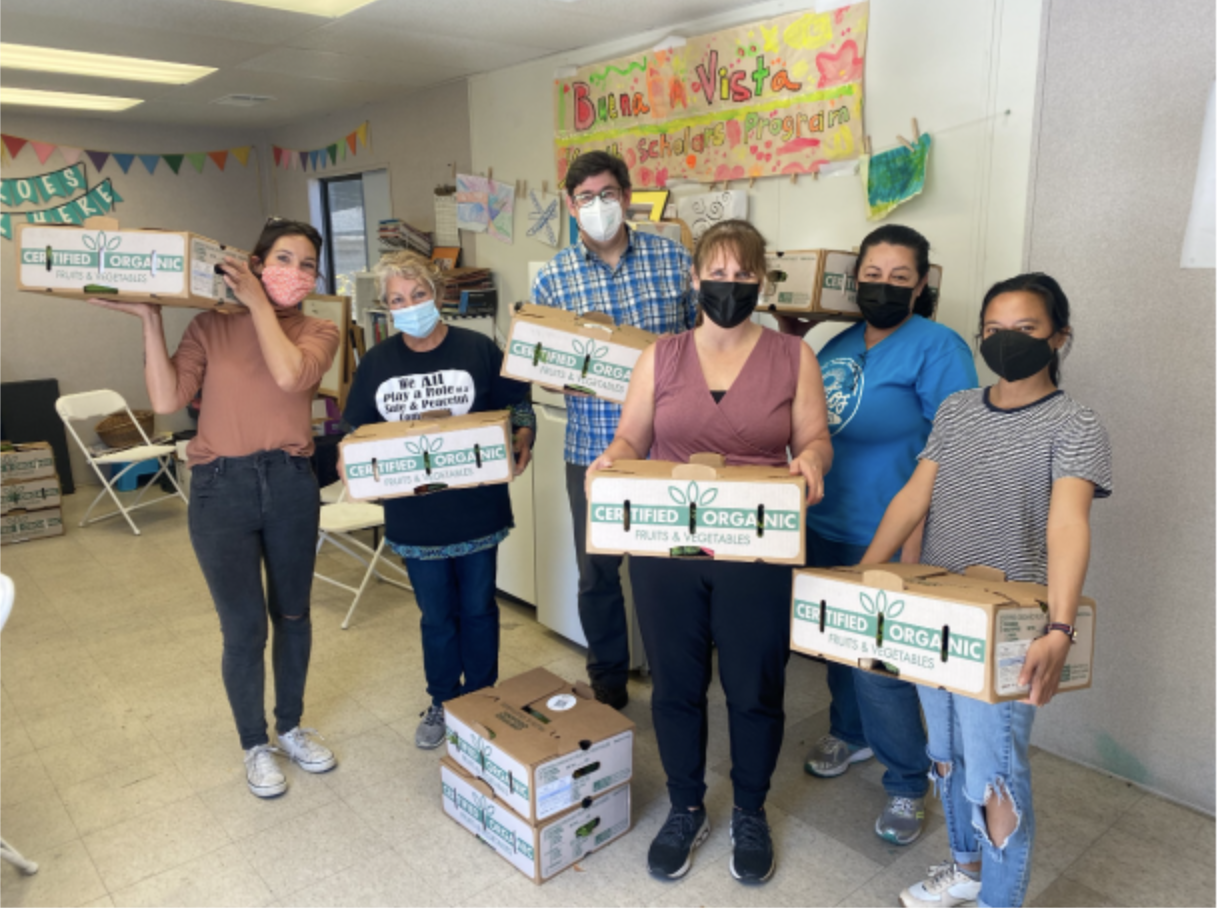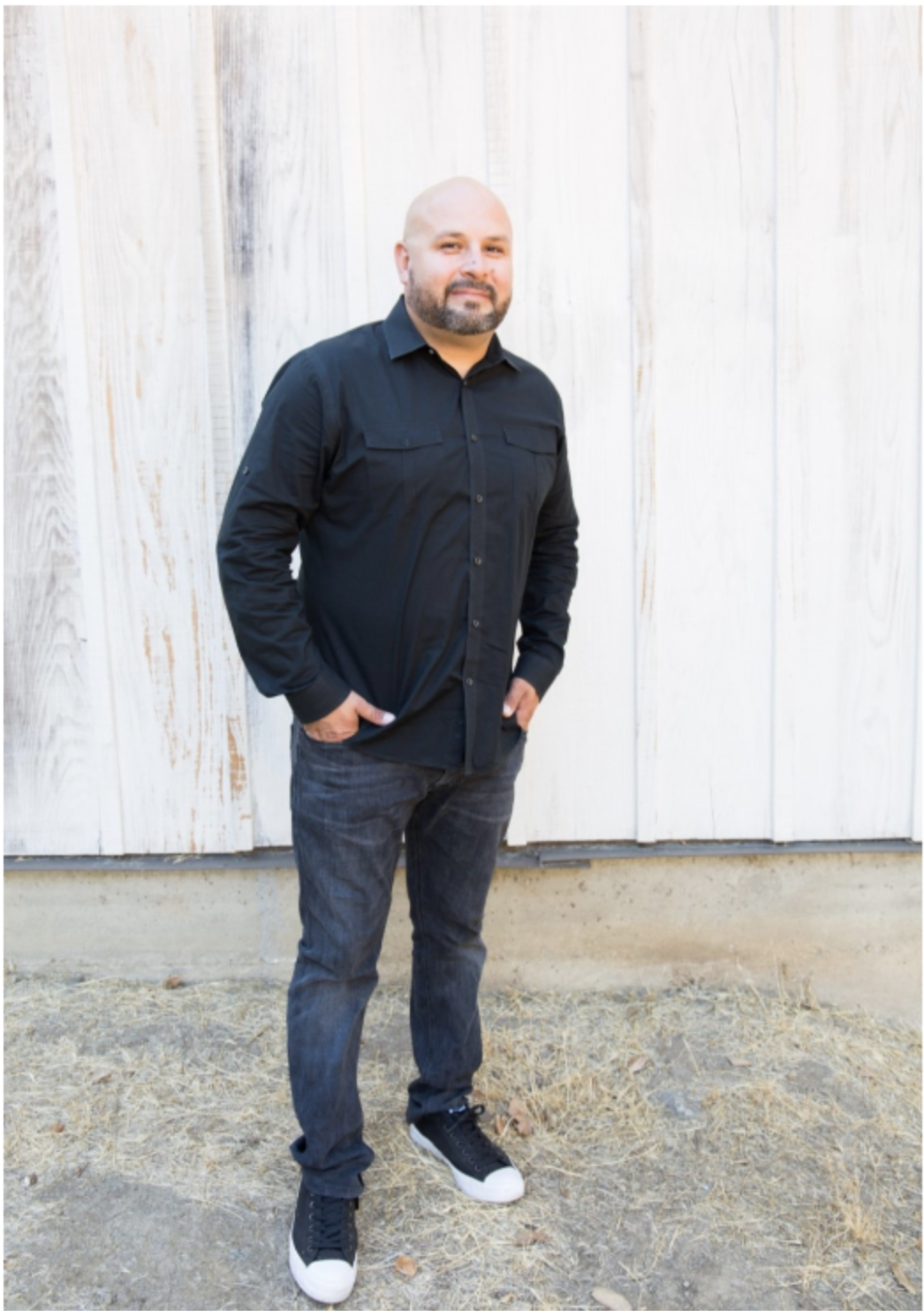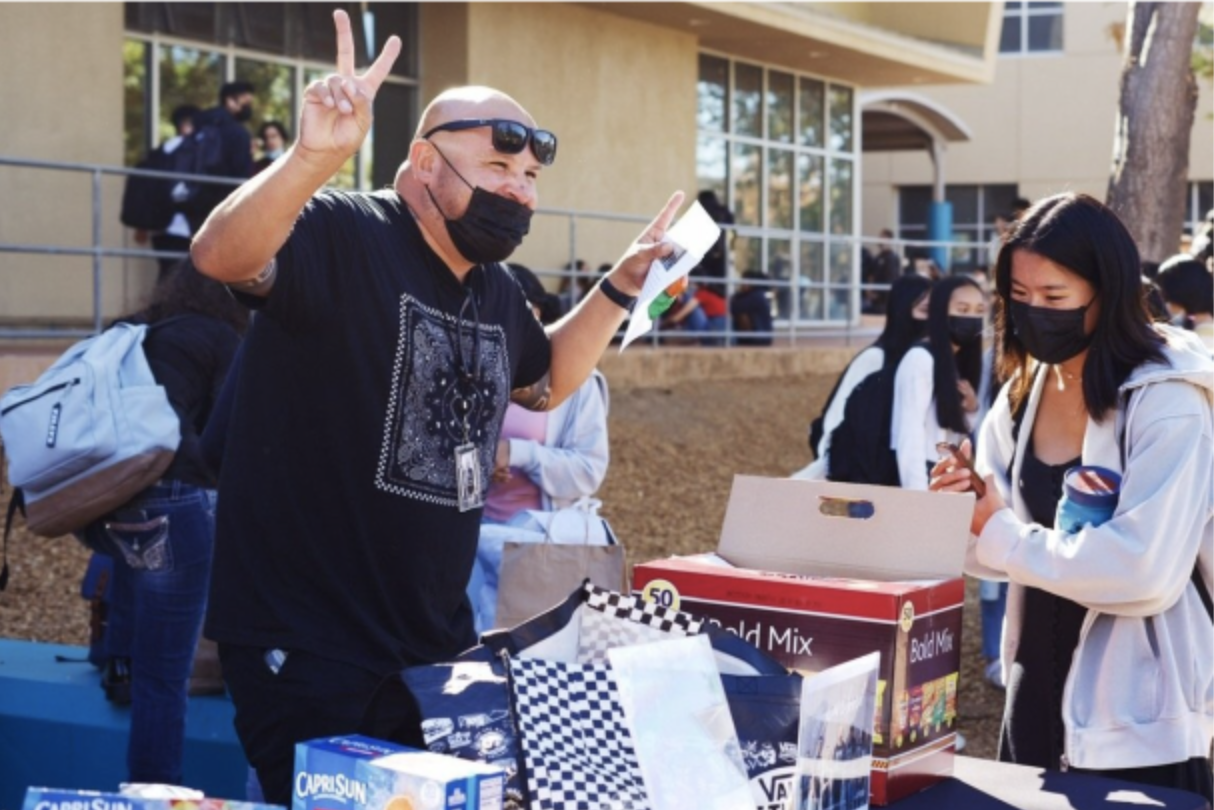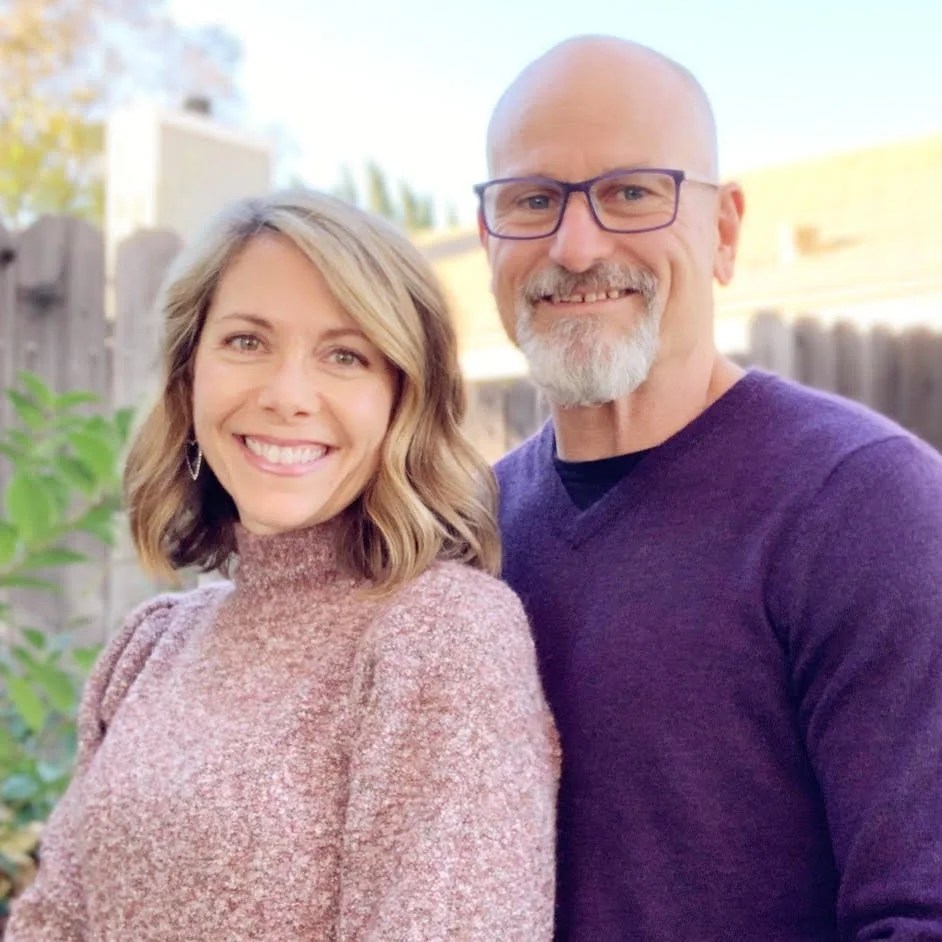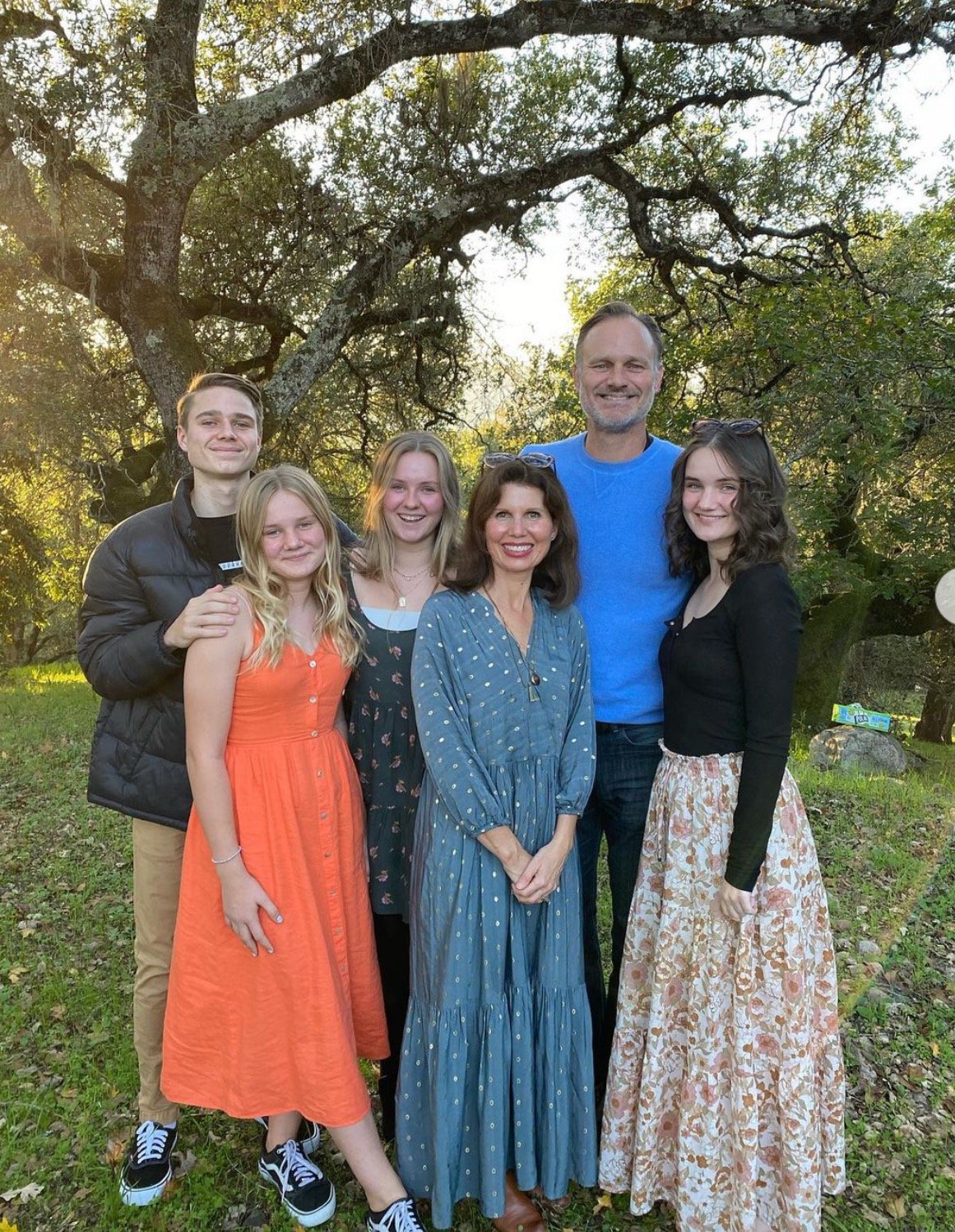State of the North Bay: Students and Schools
As We aim to understand the challenges our neighbors face and find ways to alleviate their burdens we’ve developed the state of the NOrth Bay Report.
Join us as we discuss our analysis of Student Readiness, Educational Outcomes and Achievements, and School Readiness as well as hear some stories of impact from local church partnerships.
Aslan Housing Foundation: Making a home for ministers in the Bay Area
As mortgage rates continue to increase the housing market is softening in most parts of the country. However, here in the Bay Area where the median sales price for a single-family home is $1,250,000 even with a slight dip, homeownership is out of reach for many including those working in full-time ministry. The average rent for a two-bedroom apartment here is between $3000 and $4000, also challenging for many pastors and church staff members.
“The housing crisis here is affecting recruiting and retention in our churches. We need to create solutions to address the crisis to keep our pastors here.” - Nicole Bergeron, president & CEO of Aslan Housing Foundation.
According to Glassdoor, pastors in the Bay area earn an average annual income of $81,049. Input this salary into a home affordability calculator and you’ll find that these pastors can afford a home priced at $388,175. There’s just a handful of homes listed at this price in the region.
“At Peninsula Covenant Church we almost lost two very strategic hires who had been recruited from out of state because of the cost of housing here,” Bergeron recalls. “A group of us lay folks at the church decided to work on helping PCC figure out an approach to housing the staff.”
Bergeron and Aslan co-founder Doug Morton decided to be the change they wanted to see and founded Aslan in 2018 in response to the housing crisis and its impact on PCC staff members.
Naming the organization Aslan was strategic as Bergeron explains, “Of course, Aslan is the Christ figure in the Narnia stories. We were sure the Christian community would recognize this evocative name. We adopted it because of Aslan’s benevolence, fierceness, and wisdom. To be operating in this kind of market we need to be wise, to be discerning, to be fierce, and to be ready to pounce.”
As a first step, we created criteria to prioritize staff needs. Then we decided to build.an equity share for the most senior staff at PCC who met a criteria the church had developed. “We found this to be a hard target for someone to actually shoot an arrow at,” says Bergeron. “So, we decided to instead build an inventory of homes to rent at below market prices. We own a handful of homes seven households occupy right now.”
As the organization evolved, they developed three core actions: coaching, discipling, and solving. “We coach pastors about how to save for housing and how to get the most out of a housing allowance,” Bergeron notes.
“We disciple stakeholders, making sure people understand their pastors’ housing needs. We’ve found that congregations don’t realize just how low a pastor’s pay is and how challenging it is to find affordable housing.
“We’re encouraging people to help by renting their extra bedroom, their ADU (accessory dwelling unit), or if they have a second home, renting that to someone in ministry at a below market price.”
Aslan created Marketplace to match pastoral staff with available housing as Bergeron explains, “If someone has an ADU, a granny unit, a room, or a full home available where a pastor can live at below market rent -- still a fair amount of money -- they can list it on our marketplace.”
The organization is working to solve the housing crisis by managing property. “We property manage homes for Christians who are willing to rent at below market. This doesn’t just solve for the pastors, but it creates a nice way for families to feel good about what they’re doing with a home that’s not their primary residence.”
Recently Aslan was approved as a down payment assistance program with Cross Country Mortgage and Lawyers Title. “We put money alongside the down payment so the pastor can have a small enough mortgage to service,” says Bergeron. “Next, we hope to create a funding pool of equity share dollars where Christian institutions, people with retirement accounts, and high net worth individuals can invest in the California real estate market and bless pastors.”
Bergeron has learned a lot during the past four years and is using that knowledge and experience to consult with several churches both in the Bay area and elsewhere including Washington state and New York. “We can help churches find better housing solutions more quickly because we’re facilitating and scaffolding the strategy.”
Aslan has already helped more than thirty pastors, but Bergeron believes they’re at an inflection point.
“This new down payment assistance program is incredibly exciting. Now anytime some church, pastor, or church investor wants to do an equity share, they don’t have to go it alone. But to scale and make housing solutions affordable for churches, we need philanthropic support and investors.”
Contact Nicole Bergeron, nicole@aslan.org, to learn more about how your church or ministry can partner with Aslan.
Conversations that Matter - The Church and the City
What is the connection between the church and the city? Do you have a vision for the city where your church is located? join An encouraging and practical conversation on why and how to build relationships with your city leaders.
Panelists:
Adam Peacock, Founder, Feathervine,
Brian Leong, English Pastor at Lord’s Grace Christian Church and Founder, Move Mountain View
Paul Bains, Cofounder, Project We Hope, East Palo Alto
Finny Abraham, Local Compassion Pastor at Westgate Church and Executive Director, Coalition Against Poverty - Silicon Valley
5 Ways the Church can Respond to the Mental Health Crisis
Close to 50 million American adults experience some form of mental illness. Two out of five adults in the U.S. report symptoms of anxiety or depression. And there is a worrying uptick in the number of people who have thoughts of suicide. Even before the COVID-19 pandemic, there was an annual increase in the number of incidents caused by psychological distress. The grief, trauma, and physical isolation of the past few years has seriously impacted our collective mental health leading the country into what U.S. Surgeon General, Dr. Vivek H. Murthy identifies as a crisis.
Recently the FCC approved 988 as the 3-digit phone number individuals experiencing a mental health crisis can call for help. While previously those in need might call 911, the goal of the 988 Suicide and Crisis Lifeline is to provide immediate crisis intervention and support from trained professional counselors.
According to the U.S. Department of Health & Human Services, individuals experiencing a mental health crisis frequently turn to a pastor or faith leader before seeking help from a mental health professional. “I’ve been doing ministry for 30 years and I’ve never had to deal with mental health issues like we are now,” says Jesse Cottonham, Director of Life Groups at New Beginnings Community Church, which meets in Redwood City and San Jose.
The NBCC staff began the conversation on how to address its community’s mental health during the pandemic. “Our church suffered so much loss from COVID,” Jesse recalls. “Many in our community are transplants to the Bay Area. Their families are elsewhere, so many people felt isolated. We started addressing mental health based on that, but then things started happening so fast – one event after another. People were coming to the pastoral staff for help, but we’re not therapists. We realized we needed to get some good information from professionals.”
1. Bring in the professionals
“We started a partnership with a family therapist who’s helped us so much,” says Jesse. “She’s worked with us to put together some resources and workshops we use to train our Life Group leaders and our staff on how to recognize signs of mental health concerns in people. She’s shown us how we can address this, how to make sure they’re connected, how to get resources for them, and how to care for ourselves.”
NBCC partners with Dr. Christine Coleman. Shortly after the school shooting in Uvalde, Texas, Dr. Coleman led a bilingual mental health workshop designed to help parents talk to their children about the incident. “Dr. Coleman and I are putting together another workshop to take place this fall that will be even more intentional and focused. The topic will be how to recognize the signs of mental health concerns,” Jesse adds.
2. Ask the congregation what they want.
Members of the NBCC community have been very open in sharing their personal struggles not only with the church staff, but with their Life Group leaders. “We’re asking the congregation what it is they need, what kinds of resources they want us to offer,” says Jesse. “We need to stay in our lane of being spiritual encouragers, not professional therapists. That’s a fine line because we all want to help people and fix everything.”
Jesse has enlisted the help of additional professional therapists to lead new Life Groups. NBCC now offers Divorce Care, Grief Share, and Caring for Nurture, a group for caregivers. The church receives resources, material, and coaching through these national organizations. Jesse explains, “We’re trying to offer different options. If they don’t work for members of our church, we’re asking them why not and then figuring out what might actually fit their needs.”
3. Get creative
Jesse is tapping into the expertise of the partner professional therapists to find creative ways to respond to the community; “we don’t need to reinvent the wheel to address the needs of our congregation, but we’re looking for ideas besides just another support group.”
Several resources are available online, but Jesse is also working with the partner therapists to develop more personalized trainings that will address the specific needs of the NBCC community.
4. Build community
At the beginning of the pandemic, life group pastors from several local area churches formed a group and met together virtually once a month as Jesse explains, “It was such new territory for us. We talked about the issues that were coming up within our Life Groups and shared ideas.”
5. Provide training
Jesse recommends training both small group leaders and church staff to recognize the signs of a mental health crisis. “The more training, the better,” he suggests. “If you can find a professional within your congregation, that’s great.”
NBCC offers Stephen Ministry training for its members. Stephen Ministers provide one-to-one spiritual care for people experiencing difficult life circumstances.
Jesse advises church leaders to develop a mental health response slowly. “The need is great, but don’t rush into it. To do it really well, make sure you have professionals to guide you. This is not a one and done. You’ll have to constantly address mental health. To make sure you’re addressing it the right way, slow down, pray, and wait on God’s timing.”
If you’d like to learn more about upcoming Mental Health Trainings, please email, info@tbc.city
Spotlight: Johnny Huddle: Finding purpose in repurpose
When the First Church of the Nazarene on Gading Road in Hayward stopped meeting in 2020, the denomination’s Northern California District considered liquidating the property. They enlisted realtor Dominic Dutra to handle the sale. Dutra, author of Closing Costs, a new book about repurposing church property, negotiated a complicated swap with a Korean church in downtown Oakland that gave the Korean congregation a different property with a large parking lot and the Church of the Nazarene a presence in Oakland they had not enjoyed since 1969. The Gading Road property remained in the hands of the NorCal District.
Just a short time earlier Johnny and Amanda Huddle were called to move from Los Angeles to Oakland to plant the urban church on 42nd Street in Oakland. They were joined by three other couples who made the trek north. The NorCal District told them they could do whatever they wanted with the building on Gading Road. “The English-speaking congregation had closed, but there were three other groups still meeting in the church – a Samoan language congregation, a Hindi language congregation, and a Spanish language congregation,” Johnny recalls. “These three congregations were strong. They were beautiful expressions of the Body.”
Johnny wanted to see these three churches continue. They use the sanctuary for services, but he had another vision for the rest of the property as he explains, “From an organizational standpoint I wanted to do things a little differently from normal Church of the Nazarene polity. I pitched starting a nonprofit as an expression of developing a real investment in the community.”
In His Image
He named the ministry EIKON, which means in His image; “The idea of EIKON is that we just want to become more like Jesus.”
The ministry’s first initiative was Infinite Christmas, a missional movement unified around a single imperative as Johnny explains, “Infinite Christmas is God becoming flesh and moving into the neighborhoods through active generosity. It’s mobilizing our people and getting us out into the community.
Infinite Christmas, which derives its name from its kick-off date of December 23, 2020, unites church members and the larger community by distributing household items to those in need. Donated goods which are all brand new and include furniture, appliances, and non-perishable food are stored at Gading Road. Johnny says, “I thought Infinite Christmas would be the last thing we’d do. It was the first. I know it was God because He wanted us to build this network of relationships and partnerships that give us the opportunity to participate in a small way in the work other nonprofits and churches are doing as they serve vulnerable people at the point of need.”
Last year Infinite Christmas touched 18,000 unique individuals through forty points of distribution, known as PODS, churches and nonprofits that are EIKON partners.
Building community
Johnny has yet another vision for the Gading Road property – a tiny homes community. “We are partnering with the City of Hayward and with Cal State East Bay to provide tiny homes that will serve unsheltered or shelter-unstable college students. One in 8 Cal State East Bay students are shelter-unstable. The tiny homes will stabilize them and get them set up so they can then transition into more permanent housing.”
Construction is scheduled to begin in November.
“It’s a weird thing to plant a church. We listened when the Holy Spirit spoke to us saying we needed to be armed with ignorance. We’re listening to the community – learning what people are facing. There’s a hunger here in the East Bay to love our neighbor, a hunger here to be empowering, and to serve one another. We feel right at home here.”
Spotlight: Palo Alto Vineyard: Fulfilling a mission of compassion
Palo Alto Vineyard Church has a long history of supporting its local and global community organically. Their list of ministry and outreach partners numbered more than twenty-one, yet according to Director of Compassion, Julie Young, there was no focus as a church on how to serve; “people were spread out and there was really no sense of unity as a church in what we were doing.”
To address this, lead pastor, Susan Van Riesen asked the church’s Missions Board to find a focus. They met and prayed together until God revealed His plan. “We spent a whole year asking God where He wanted us to put our time and attention,” Julie recalls.
This process of discernment ultimately revealed four guiding mandates for the church’s missional effort:
Volunteerism
Prayer
Education
Relationship
These would be impossible with all 21 named partners, so the Board decided to commit to three that were local: Hope Horizon East Palo Alto, Correctional Institutions Chaplaincy (CIC) of Santa Clara County, and Reach Potential Movement.
A mission of compassion
It was at this time that the Missions Board also decided to change its name. “During the pandemic our church took a deep dive into all things related to justice and a lot of us realized the word, missions, no longer really fit what we were doing,” Julie explains. “When we consider that word today, it is often associated with the archaic term, imperialism.”
“Missions” became “Compassion and Justice “with this vision:
To engage with our Community Partners on multiple levels, including prayer ministry, volunteer work, and education about the justice issues that impact the people the organization serves.
We desire depth in both personal and organizational relationships, with the intention that individuals will be activated to live out every element of the church mission statement: To Empower People From All Backgrounds to have Intimacy With God and Influence For His Kingdom.
It was important that the church understand the intersection between justice and compassion in serving the three local organizations “We educate the church about the justice topics each organization addresses, and we intentionally build relationships with the people we serve. It’s been phenomenal to see people get connected.”
Ministry impact
Palo Alto Vineyard recently surveyed its members to assess the impact of the new ministry. Sixty-one percent of those responding said they have grown in understanding justice-related issues in the community. Forty-two percent said they are more actively serving now than two years ago and 32% said they’ve developed relationships with the people they’re serving. “They’re not just serving for two hours and then walking away. They now know people’s names and that’s awesome,” says Julie.
Julie also sees some cross-over as Hope Horizon and Reach Potential participants come to church. “Half of the kids who came to VBS last year were Reach Potential connections.”
Ever expanding work
In the two years since the creation of the Compassion and Justice ministry, the work continues to expand. “We are changing our structure. We’re probably going to have a 3-tier approach with three community partners, 8 to 10 ministry partners, and some other outreaches,” Julie says.
Recently Buena Vista Partners, an organization that supports the 300 residents of the Buena Vista Mobile Home Park on El Camino in Palo Alto was added to the list. As one of a limited number of low-income housing options in the city, Buena Vista is often overlooked, but in April 2020, a representative of Reach Potential Movement connected a Buena Vista Mobile Home Park community leader with Palo Alto Vineyard Church initiating a commitment by the church to include the mobile home park in Operation Contagious Generosity. This all-church effort funneled groceries to the under-resourced during the pandemic. Church members who dropped off the food began to get to know the residents which not only built trust, but developed lasting relationships. At the same time an individual contacted Julie with the offer to donate a large sum of money to assist the residents; “That’s when we decided to start the nonprofit, Buena Vista Partners.”
Buena Vista Partners is an independent nonprofit, not a ministry of Palo Alto Vineyard; but the church has just recently voted to include it as a ministry partner.
Compassion 101
As Director of Compassion and Justice, Julie is learning a lot she can pass on to the rest of the church; “the most beautiful thing I’m learning from Compassion ministries is how God works through the one-on-one. As much as we want to pour in money, resources, and prayer, if you’re not actually making friends you’re missing out on the best part.”
Spotlight: Danny Sanchez: Blessed are the Peacemakers
Danny Sanchez is a lifelong San Jose resident and the Founder and Executive Director of The City Peace Project. A youth violence prevention activist and Latino leadership advocate, he serves as the volunteer Lead Chaplain for the City of San Jose Mayor’s Gang Prevention Task Force and Lead Chaplain for the Santa Clara County Valley Medical Hospital Peer Intervention Program, Trauma to Triumph.
If The City Peace Project had existed when Danny was a teen, his life might have followed a very different path. But it was his challenging personal experiences that inspired him to found the organization. “I didn’t really have any guidance when I was young,” he recalls. “I made a lot of mistakes. I got in trouble at school. I was suspended a lot for fighting. I went to Juvenile Hall for the first time when I was 14. That was a terrible, traumatizing experience for me.”
Danny says he was justice involved for most of his youth, serving time at both San Quentin and Folsom State Prisons, but everything changed when at the age of 29 he accepted Christ.
“I had a near death experience. Up to that point in my life, I didn’t care if I lived or died, but when I actually stared death in the eyes, I wanted to live. I had a radical transformation and I’ve never been the same.”
Radically Transformed
“I know what it feels like to have no peace, to try to find some sort of meaning for life. I want to be the person I wish I had when I was younger,” says Danny, who is the father of five children he shares with his wife, Abby, in a blended family.
In 2010 he created a crisis response program for the Gang Task Force to provide spiritual care, direction, and support for the families of kids impacted by youth violence. Funding the outreach was difficult. Danny remembers, “We tried to raise support, but that first year we only raised $7000. I did odd jobs to bring in money. I’d wear a suit to speak at the Mayor’s Faith Leaders breakfast at City Hall in the morning and when I was done, I’d change and go do handyman work. But God did provide for us.”
A tragic event propelled Danny to start The City Peace Project in 2012. “I was doing a funeral for a young man who died in a gang-related homicide. He was a senior in high school, the only son of a single dad. We were in a small chapel that was packed with people who all wanted to share how much they loved him. They spoke for more than two hours.
“I stood there looking at these people, who are high, angry, sad, or expressionless, and I felt like the Lord was telling me, ‘They are like sheep without a shepherd.’ I realized I needed to shepherd these kids. I felt called to become proactive rather than help families after their loss and that was the birth of the City Peace Project.”
Today TCPP boasts a team of ten who focus on mentoring, life coaching, conflict resolution, gang prevention, and intervention. Six San Jose churches partner with the organization. Although ministry activities like Bible study happen off campus, tutoring and mentoring take place at school. “We started in a couple of schools, but now work with over 30. Our staff probably sees 200 – 300 kids a week,” says Danny.
Proactive Peacemaking
During the pandemic TCPP pivoted quickly to provide support for the under-resourced families of their students like food, clothing, and rent. The material needs were overwhelming, but through church partnerships the organization was enabled to respond.
When the kids returned to school Danny noticed the mental and emotional toll lockdown had taken. “I think there was a lot of fear about going back to school. There were fights every week and kids weren’t responding to me in the same way they used to. I prayed, ‘God, how am I going to reach these kids?’ I felt like the Lord told me, ‘Feed them just like Jesus did.’”
Danny calls it proactive peacemaking. He explains, “One thing God showed me is that the opposite of pain and trauma is joy and fun. We bring food to school. We do social media giveaways. Churches like Westgate, Venture, and Spectrum Church have been tremendously supportive with resources for this.”
Recently Danny designed a peacemaker leadership program that TCPP is piloting at a local public high school. “This is new for us. Usually, we work with students who have behavioral issues, but with this program instead of just doing prevention and invention, we’re going to develop leaders.”
Although Danny and the TCPP team have training and certification, they identify themselves as mentors; “We know when something is out of our scope of service and when to refer kids. We work very closely with social workers in the wellness centers in the schools.”
The TCPP Model
Danny has a vision to replicate TCPP beyond San Jose. Recently he began working in the Milpitas school district and with contacts in Boston, Chicago, and Los Angeles, Danny envisions expanding the reach nationwide. “The City Peace Project is a manifestation of my heart – what I needed. Every school needs a program like this. I want to see The City Peace Project not only in every school in San Jose but around the country.”
Danny has written the book, Post Traumatic Quest: My Quest to Transcend Trauma, Turn My Pain into Purpose, and Find Peace about his life. He’s given a copy to every youth incarcerated in Santa Clara County. “I wrote the book to give kids I work with hope. I thought that as a 14-year-old with a felony my life was over. I flirted with suicide. I didn’t care if I lived or died, but I made it beyond by my faith in Jesus Christ. I want kids to know they can make it beyond their current circumstances, too.”
Spotlight: Phil Lockwood: Prepared by Life to Minister
You could say Phil Lockwood had been preparing for his role as Discipleship Pastor and Chaplain for Living Hope Church in Dixon most of his life. In fact, his passion for the work he does with high school students stems from his own school experience; “The kids I work with are the ones people consider misfits. Nobody wants anything to do with them. I was one of those kids.
“I’ve had severe learning disabilities all my life – reading and spelling and everything. I went all the way through school barely making it. I was made fun of and bullied. That was really painful and traumatic.”
Once he was done with high school, Phil never envisioned going back. His education came elsewhere. “God took me to a different place,” he explains. “I was looking for some way to soothe the pain and that led me down a path to drugs. Because of that lifestyle I ended up doing 13 months in a California state prison outside Tracy and that’s where I had a be still and know God moment.
A Voice and a Platform
“I got into the Word of God and in the pursuit of Jesus I watched the transformation of my life. I’ve never been to seminary, but when I look at my life, I see that God has given me a voice and a platform I really shouldn’t have.”
Phil and his wife, Angela, are founding members of Living Hope Church, but for years his vocation was welding. Almost ten years ago, Phil sensed God was asking him to step away from his work as a welding fabricator. “It felt like God wanted me to step into ministry in our community, but He didn’t reveal to me what I was supposed to do for two and a half years.”
Eventually Phil took on the full-time role at Living Hope Church. He explains just what a discipleship pastor is; “First and foremost for me a discipleship pastor lives a life that really reflects Christ in a way that people want to know, why do you care for me? Why do you love me the way you do? Why do you treat me the way you do? Tell me more so I can be like that.”
Back in the Classroom
Phil returned to the classroom and began mentoring youth at Maine Prairie High School. “It’s the continuation high school for kids just like me.”
Following a tragedy that devastated the school community, Phil was called in to talk to the students. “It takes a lot for these kids to trust people. They didn’t want to talk to any counselors. We started meeting in the park on Wednesdays to process their feelings and emotions and work on a memorial for the kids who’d died. That’s what launched the ministry in the schools.”
Before COVID-19, Phil brought his laptop to school and sat quietly in a classroom waiting for kids to come over and talk. Not only did this become his office three days a week, it established a connection between Living Hope Church and the local schools. As a result, Phil co-founded the Solano County Faith and Education Collaborative with representatives of the school system. “It’s a cool, unique relationship. We don’t have any kind of agenda except to love these kids.”
The Collaborative has worked with the Solano County Office of Education and the Solano County Department of Health and Social Services’s Behavioral Health Division in the development of wellness centers in 45 schools throughout Solano County.
“If a kid is dealing with any kind of issue or they just need a break, they can go to one of these wellness centers,” Phil explains. “The intent is to have a caring adult volunteer from our faith-based group assess whether this kid needs to see a clinician or just needs to have a conversation. The Superintendent told us, ‘your church is actually showing an example of what it is to unconditionally love people you don’t even know.’”
Although pandemic protocols preclude volunteers from coming to campus right now, Phil is focused on preparing individuals to respond to youth mental health crises by recruiting people and organizing their training which includes first aid, mandated reporting, and suicide prevention.
Reaching a Diverse Community
In addition to the outreach to students, Phil is a community chaplain. “Being a chaplain is a way of ministering and meeting the felt needs of people which is what we saw Jesus do all the time. I’m always looking for ways to build bridges. As a chaplain, a lot of times I run into families that have either no faith structure or are of different faiths. They get to see Jesus in some way through me.
“I’ve got a high school education, but God has given me a spiritual gift that enables me to be empathic with people. I’ve leaned into that. As long as I’m faithful to Him and trust Him, He’s going to equip me to do what I’m called to do.”
Contact Phil to learn more about the work he’s involved in, pushing4impact@yahoo.com
Spotlight: Adam Peacocke: An Unexpected Encounter with God
Adam Peacocke served as lead pastor at City Life Fellowship in Santa Rosa from 2002 until 2017. He surprised himself when he made the decision to leave the pulpit after fifteen years to found Feathervine, a ministry focused on uniting local churches in an effort to address some of the big issues facing Sonoma County. Adam explains,
“I had an unexpected encounter with God in prayer and felt a strong call to step away from pastoring. God put a burden on my heart to serve a different type of ministry function -- building bridges to help the church become more present in our community.”
The name Feathervine speaks to the elements of faith and faithfulness. “It’s about seeing the church have roots and wings in our community as a witness to life with Jesus Christ,” says Adam.
It’s been a tough few years for the half million people who live in the region. Many are still reeling from devastating wildfires on top of the challenges of homelessness, crime, and a continuing rise in the cost of living. While Adam, a lifelong Sonoma County resident, has been a community advocate for decades, his hope is that through Feathervine churches will unite to increase involvement. “I had a conversation with the Mayor of Santa Rosa who told me that it’s hard for a municipality to partner with a church or any single organization. But she said it’s easy to partner with ten churches. To me the problem to solve is bringing those churches together.”
Building Trust to Build Unity
“I firmly believe that there’s no substitute for trust as we look to engage our community,” says Adam. “When I was pastoring, I made a point of building trust with the pastors of other congregations here. We often gathered together to serve and worship. We also made our facilities available to other congregations. I got a reputation as someone who was encouraging unity and trust among the churches. Now there’s a core group of close to 50 congregations committed to supporting our community.”
Feathervine has relationships with an additional twenty-five churches, many serving different cultures. “I’m excited about the Gospel’s impact as we build unity across ethnic and cultural lines here in Santa Rosa.”
Right now, Feathervine is focusing on three areas: local schools, foster care, and homelessness, but Adam continues to prioritize trust. “I love goals. I love potential; but I want to move at the speed of trust. I believe that’s the pace where change really happens.”
Roots and Wings in the Community
Twenty churches are working in the foster care system and supporting a number of aligned ministries including CarePortal, Foster the City, and Royal Family Kids.
Feathervine is also focused on supporting elementary schools which are often under-resourced. So far 20 churches are participating in this work. “It’s a strategic opportunity. Kids are at an elementary school longer than the rest of their school time combined. We match congregations with schools near them. There’s a whole host of ways that our churches have been able to creatively step in to be good neighbors to our local schools. It’s as simple as meeting needs where the schools have them.”
Using a model similar to TBC, Feathervine comes alongside churches to support their existing ministries. “We amplify the good works local churches are doing to meet the needs in our community.”
During the 18 months following Sonoma County’s catastrophic wildfires, teams from different area churches visited displaced families occupying FEMA trailers in a Santa Rosa RV park to deliver water and other resources. “Church teams rotate, but Feathervine’s role was to be there every week and help coordinate the efforts,” says Adam. “We were there the day they moved in, and we were there when the last person moved out of the trailers.”
Area congregations are also ministering to the homeless in partnership with the Redwood Gospel Mission. “Churches open their doors and provide meals for up to 40 unhoused people. We don’t just stand behind a table and ladle soup into a bowl. We sit at the table together, share a meal, and get to know each other.”
Admittedly Feathervine has a lot on its plate right now. “I’m trying to keep things as simple as possible,” says Adam. “We’re working on growing and maturing in effectiveness and impact not just in our community, but also in our churches. I want to be the relational bridge, to be the convener and encourager.”
To connect with Adam and some of the work he’s doing in the North Bay, email
Finding the Rhythm of Sabbath Rest
Finding the Rhythm of Sabbath Rest
There’s an old joke about a professional football player who, while negotiating his contract, lets his team know that he doesn’t work on Sundays. That’s kind of a non-starter isn’t it since pro games are typically scheduled for Sundays? Like football players, most pastors can’t take Sundays off. So, what everyone else may call Sabbath, is not your day of rest. Yet, the Lord commands that we all – pastors and ministry leaders included -- take a break from work every week.
“It doesn’t’ matter which day of the week it is,” says Cathy McIlvoy, who along with her husband, Rob, supports pastors and ministry leaders in the Bay Area through Standing Stone Ministry and frequently speaks on the topic of Sabbath rest. “It’s a day to not engage with work. As a pastor, you have more control over that than you may think.”
In his book, The Emotionally Healthy Leader, author Peter Scazzero defines Sabbath rest as “a 24-hour block of time in which we stop work, enjoy rest, practice delight, and contemplate God.”
Dr. Joe Gorman, the Director of the Christian Ministries Online Undergraduate Program at Northwest Nazarene University and author of Healthy, Happy, Holy: 7 Practices Toward a Holistic Life, suggests, “Do whatever recreates, restores, renews, or refills your spiritual, physical, mental, and emotional reservoir. Do whatever increases joy, delight, and rest and avoid doing whatever detracts from any of these.”
Sabbath rest won’t look the same for everyone. Cathy reminds us, “God made each of us to be unique. We enjoy different things. For one person it might be going for a long walk. Another might prefer playing a sport or curling up on the couch with a good book. Spending time not working – having rest and doing something that delights us -- honors who God made each of us to be.”
Sabbath rest is a biblical response to stress
It won’t come as a shock that pastors and ministry leaders deal with a lot of stress, especially as we all cope with a global pandemic. Data collected by SoulShepherding.org confirms this:
75% of pastors report being “extremely stressed” or “highly stressed”
90% work between 55 to 75 hours per week
90% feel fatigued and worn out every week
A 2013 study from the Schaeffer Institute reports that 1,700 pastors leave the ministry each month, citing depression, burnout, or being overworked as the primary reasons. Regularly scheduled break helps to recover from physical and mental effort. Building a rhythm of Sabbath rest will
promote mental health
boost creativity
increase productivity
promote well-being
reduce stress
improve mood
strengthen relationships.
(The Maslach burnout inventory is an assessment tool developed by Christina Maslach and Susan E. Jackson to determine an individual's experience of burnout.)
Sabbath rest requires trust
In his book, Sabbath: Finding Rest, Renewal, and Delight in Our Busy Lives Wayne Muller says that in practicing rest, ministers develop greater trust in Jesus, acknowledging the work that Christ has already done.
Sabbath requires surrender. If we only stop when we are finished with all our work, we will never stop—because our work is never completely done…If we refuse to rest until we are finished, we will never rest until we die. Sabbath dissolves the artificial urgency of our days because it liberates us from the need to be finished.
“Pastors are never without needy people and stuff to do,” says Cathy. “A huge component of Sabbath is trusting God with what you don’t get done. Even though members of your congregation may feel like you should be available 24/7, put boundaries in place to help usher in Sabbath rest. You don’t need to be a superhero and answer every call or need. Find a way to disengage.”
Find the rhythm of Sabbath rest
Perhaps the greatest challenge to Sabbath rest is shifting from work mode to rest mode. Cathy explains, “Pastors have their hands on a lot of things including people’s lives. It’s hard to just shut that off so ask the Lord to help with that. This is what He wants for us. He will help us.”
Create a Sabbath on your calendar as a recurring event and do everything to protect the time. While there is no prescription for how to practice Sabbath rest, start by making a list of those activities that
Fill you with joy and delight.
Leave you refreshed and renewed emotionally.
Promote peace of mind, body, and spirit.
Be consistent
Cathy advises, “If Sabbath rest is something we do from time to time, we’re not in the rhythm of it. It’s the same as practicing anything; the more you do it, the better you get at it.”
She points to her own experience when she describes what happens when she’s not consistent, “When I’m casual about Sabbath, then I get sloppy. It’s not as meaningful when I’m not really committing to it. Seek God’s help with this and trust Him with the time.”
Sabbath rest is a gift from God. Like all gifts, we should receive it gratefully and enjoy it fully. Cathy suggests that we apply the determination we put into being productive into practicing Sabbath; “We get better the more we’re committed to doing it. Week 1, 2 and 3 might be hard, but weeks 4,5,6 and on? You’ll wonder what I would do without this?”
Resources:
Keeping the Sabbath Wholly, Marva J. Dawn
The Radical Pursuit of Rest: Escaping the Productivity Trap, John Koessler
The Sabbath, Abraham Heschel
This Day, Wendell Berry
We’d like to know, what are your favored Sabbath rest practices and the impact of Sabbath rest on your life and ministry?
Foster Care and the Church
May is National Foster Care Awareness Month – the time of year when the spotlight shines on the plight of neglected and abused children. There are more than 6,000 foster children in the 11 counties of the San Francisco Bay area.
A child enters foster care when a report of abuse or neglect within their own home is substantiated by Child Protective Services. Thirty-four percent of these children go to live with relatives, but 20% of California’s foster children are forced to move out of the county where they have been residing because there are not enough homes available nearby. This leads to further disruptions for them as they change schools and adapt to unfamiliar neighborhoods sometimes hundreds of miles away. (It is not unheard of for a child from the Bay Area to move to a foster home in Southern California.) On top of that, many foster children experience multiple changes in their living situations. While the average stay in foster care is eighteen months, for those children who are in care for two or more years, 44% move three times and 15% move five times.
Increasing the number of available foster homes locally is one way to address the need but recruiting foster parents can be challenging. “With more children entering into care than families to provide it, we’re in a crisis,” says Ellie Egles, Director of Care and Support at Foster the Bay.
Foster the Bay is a coalition of 150 churches throughout the Bay area committed to not only finding homes for foster children, but supporting those families providing care. “Our model draws from the very essence of what the church should be – a community providing tangible, spiritual, and emotional support,” Ellie explains.
Churches in the Foster the Bay coalition raise up at least one foster family and a group of support friends to come alongside the family. “It’s actually really difficult to be a foster parent,” says Ellie who along with her husband has provided care in their home for three children. “This is physically, emotionally, and spiritually demanding. 60% of foster families drop out after the first year or the first placement. So rather than tell a foster family, you have to do this on your own, we ask three or four support friends to walk through this journey together with them.”
A church for every child
Since it was established 5 ½ years ago, Foster the Bay has worked with church leaders to recruit foster families, advocates, and support friends. They also provide resources, trainings, and tools to inform and encourage participation. Ellie confirms, “It’s not just a foster family saying yes and welcoming a child; it’s the whole church saying yes.”
Foster the Bay connects churches to a number of other organizations that provide training, conferences, and camps like Help One Child which gives the church the opportunity to wrap around foster families as an educated village. The goal is to support placement stability and health.
“Help One Child is very committed to education,” says Executive Director, Valerie Crane. “But if you’re never exposed to what foster care is, it remains this mystical thing. We talk to the church about who’s involved in foster care and what it looks like. We break down stigmas. It’s an impactful way to equip the church to better love the foster families that are stepping forward.”
The education is on-going. Help One Child circles back at three months, six months, and even a year later with more information. Once a month they host a therapist for foster parents. They also provide a quarterly seminars. “Our staff is constantly sitting beneath great teaching. It’s our job to make it palatable for the church volunteers as well as the caregivers,” says Valerie. “If we can educate a community to better understand what’s going on in a child’s brain and to better understand what’s going on in a household, they’re going to be a valuable support.”
A team effort
Help One Child currently partners with 85 churches in the Bay Area, but opportunities for engagement vary. Some churches sponsor annual donation drives to collect Christmas gifts for foster kids, equip a new foster family, or send a child to camp. Others host events for foster and adoptive families.
Churches interested in providing for some very real needs can use the online platform, CarePortal. Help One Child is the regional manager for CarePortal and collaborates with the child welfare workers in local counties to uncover needs and make churches aware of how to respond. Valerie says, “It’s a super simple way for people to respond to tangible needs like a family needing a crib for a new placement.”
A personal impact
Valerie first became involved with foster care as a Help One Child Supper Club volunteer teaching teens in group homes how to prepare food. She and her husband are foster parents who to date have cared for seven children. They adopted Child #6.
Supper Club volunteers plan a meal they then prepare with kids in the residence. It’s gives the staff and the kids a break from the regular dinner time routine and helps the teens develop relational skills. “You don’t need a lot of training to teach someone how to cook pasta,” says Valerie. ”But if you’re signing up for Supper Club, we’re going to take a moment and unpack for you what these teens’ lives might look like. We’ll bring you up to speed on what’s appropriate and what’s not so that you can be better equipped to serve them.”
Camp is another way church members can interact with foster kids. Help One Child’s Signs of Hope camp unites 7-11 year-old foster and adopted children together at Mission Springs’ Frontier Ranch in the Santa Cruz Mountains at the end of the summer. The benefits are enormous, not only to the campers, but to the counselors as Valerie says, “The number of camp counselors who become foster parents is pretty high.”
In Sonoma County, Royal Family Kids sponsors a 5-day camp for foster kids, ages 6 – 12, who reside in the county. There’s also a three-day camp for teens called TRAC. Volunteer counselors are recruited from local churches. “This is a very unique ministry,” says Director Tom Griffith. “We directly partner with churches locally, but with the heightened oversight of caring for foster kids, we require an application process for our volunteers.”
In a typical year 110 volunteers serve the 70 children who attend the camp. Each volunteer completes up to 16 hours of training. Tom explains the process, “It takes about 6 months to raise a team from recruiting within the churches, through applications, interviews, and background checks through training and final prep leading up to camp,”
Royal Family Kids is a national organization with two hundred chapters around the country. Locally RFK partners with six churches in Sonoma County. Sadly the organization has faced some challenges in the past few years. Wildfires followed by the pandemic shut down the mentoring club program, but there is hope it can restart in the not-to-distant future.
A call to the church
According to the California Department of Social Services reports of suspected child abuse in the state of California dropped 28% during the height of the pandemic, but with schools re-opening and teachers the most common reporters of abuse and neglect, it is likely the number of children in need of foster care will increase significantly soon.
Child Protective Services is eager to work with local churches to recruit and support foster parents. With the support of organizations like Foster the Bay and Help One Child more churches can step up and respond to the need. As Valerie says, “in order for us to really make a difference, we all need to have more compassion, which means more understanding of what these children have gone through and what their parents -- bio and foster -- have gone through. It just can’t be somebody else’s problem. If we can step in and be the church to these kids we’d be making some pretty bold statements about the love of Christ.”
A Church Parking Lot can be a Home to Some
Saratoga’s interfaith program, started in the spring by seven local congregations and a community college, has begun one of a growing number of “safe park” programs across the San Francisco Bay Area, where the high cost of living has forced many onto the streets.
The homelessness problem seems to be getting worse. Affordable housing is lacking, housing costs have skyrocketed, and recent wildfires have left tens of thousands of Northern California residents homeless.
Saratoga congregations have stepped up to help some of those people. Drugs and weapons are not allowed at these sites and most provide a security guard. Most of the congregations open their buildings for a couple of hours to provide bathrooms, recharging stations, and, often, a kitchen. They rotate monthly to comply with local parking laws.
This is what collaborative compassion effort looks like. We’re so proud of the churches who have come together to help those in their neighborhoods.
Read the full Washington Post article on this program here.
Westgate Church's Parking Lot. (Nick Otto)
